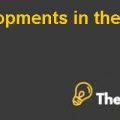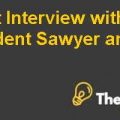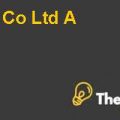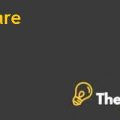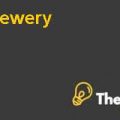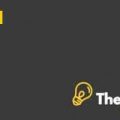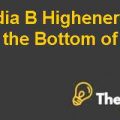Cooperate Perspective
The Cooperate perspective of the company is that the cost associated with the product should be relevant and selling gross margin should be eliminated. In this case study (exhibit 9), all costs associated with the company are relevant. According to the company’s perspective, the relevant costs are variable and fixed cost. As well as estimated price calculated with automotive division perspective is shown in appendix 3 and 4 of both the products. On the other hand, the analysis shows that automotive perspective states that the relevant cost is variable cost only.
- Did Timken's policy of market-based transfer pricing rules for steel products "work" for the company? Specifically, did this policy provide divisional managers at the steel and automotive division with desirable information and incentives?
The market based transfer pricing rules for the steel products would work for the company. The company is currently using the market based transfer phenomenon and it is working for the company as it is written in the case that the performance of the management is dependent upon the EBIT/BIC which is calculated in the excel spread sheet as well as mentioned in appendix 5. Its shows that the performance of the company is in an increasing trend, whereas, the company’s percentage of sales is also in the increasing trend which shows that the result of the market based formula is to be positive. On the other hand, it is seen that the market-based transfer policy is the actual price of the market; therefore, the managers at the steel and automotive division can easily get the desirable information of the market. It is seen that the market-based transfer policy concerned with the outside market is neither competitive nor stable, internal decision making may be distorted by reliance on market-based transfer prices, if competitors are selling at distressed prices or are engaged in any of a variety of “special” pricing strategies (e.g., price discrimination, product tie-ins, or entry deterrence). Also, reliance on market prices makes it difficult to protect “infant” segments, whereas, steel division gets high incentive as they are selling in the market prices as well as it is understood that their earning after interest and tax would increase as well as the sales would increase. On the other hand, the automotive division performance would decrease as cost would increase; therefore, it would be possible that their manager’s incentives might be decreases.
Q5). In the past, Timken valued internal steel transfers at cost. What would be the advantages and disadvantages of cost-based transfer prices compared to market-based prices?
Advantages of Cost-based transfer prices
The first advantage of the cost-based transfer is that it motivates management efforts. When based on the budgeting costs, there is less incentive to control costs if the transfer is based on actual costs.
Disadvantages
Disadvantages of Cost-based transfer prices
- The management does not always achieve the goals.
- It is useful for evaluating the sub un it performance which is difficult unless transfer price exceeds full cost and even then it is somewhat arbitrary.
- It is rule based; therefore, it does not preserve sub un it autonomy.
Advantages of market based transfer prices
Transfer prices are based on market prices when there is a perfectly competitive market for the goods and services that are bought and sold between divisions of an organization, the transfer price should be the market price. Moreover, the transfer prices should be lower than the selling prices because the advertisement cost and selling cost are not associated with the product, therefore, it should be lower than the selling price.
The advantage of market price transfer policy is that it forces the t selling division to be competitive with market conditions and the other advantage is that, it does not penalize buying division by charging a price greater than it would have to pay on the market.
Disadvantages of market based transfer pricing
The main disadvantage of market based transfer price is that it may lead selling division to ignore negotiation attempts from buying division and sell directly to outside customers. This could cause an internal shortage of material. This forces buying division to purchase material from outside, and it might be possible that the overall company’s profits may fall even though selling division makes a profit.
Appendix
Appendix 1
| Exhibit 7 (T-300 Steel Tubing) | Market price based approach | |
| Transfer fees = | Differential cost to selling division + | Opportunity cost of selling internally |
| Transfer fees = | 750 | 250 |
| Transfer fees = | 1000 | |
Appendix 2
| Exhibit 8 (B-450 Steel Bar) | Market price based approach | |
| Transfer fees = | Differential cost to selling division + | Opportunity cost of selling internally |
| Transfer fees = | 550 | 100 |
| Transfer fees = | 650 | |
Appendix 3
| Cone Assembly C 400 — Unit Gross Margin | ||||||
| (Steel Bar) | Cooperate Perspective | Automotive Perspective | ||||
| Average Sales Price | $2.00 | 2 | ||||
| Raw Material — Steel | 0.35 | 0.35 | ||||
| Green Operations Costs | 0.1 | 0.03 | ||||
| Heat Treat and Finishing Costs | 0.5 | 0.2 | ||||
| Component Costs | ||||||
| Roller | 0.4 | 0.14 | ||||
| Cage | 0.1 | 0.1 | ||||
| Cost | 1.45 | |||||
| Gross Margin | 0.55 | 0.82 | ||||
| Estimated Fixed Cost Percentages | ||||||
| Green Operations Cost | 30% | |||||
| Heat Treatment & Finish Cost | 40% | |||||
| Rollers | 35% | |||||
Appendix 4
| Cup CU•260 - Unit Gross Margin | ||
| (Steel Tubing) | Cooperate Perspective | Automotive Perspective |
| Average Sales Price | 1 | |
| Raw Material — Steel | .30 | .30 |
| Green Operations Costs | 0.15. | 0.0375 |
| Heat Treat and Finishing Costs | .30 | 0.105 |
| Cost | .75 | .44 |
| Gross Margin | 0.25. | |
| Estimated Fixed Cost Percentages | ||
| Green Operations Cost | 25.% | |
| Heat Treatment & Finish Cost | 35% | |
Appendix 5
| Performance management | ||||
| 2002 | 2001 | 2000 | ||
| Automotive Bearing | EBIT/BIC | 48.66% | -109.64% | 48.66% |
| Industrial Bearings | EBIT/BIC | 226.47% | 92.78% | 91.45% |
| Steel | EBIT/BIC | 121.81% | 29.88% | 36.65% |
Appendix 6
| Percentage Growth of Automotive Business | |||
| 2002 | 2001 | ||
| Sales Growth % | 11.95% | -10.57% | |
Appendix 7
| Exhibit 8 B-450 Steel Bar | Market price based approach | |
| Transfer fees = | Differential cost to selling division + | Opportunity cost of selling internally |
| Transfer fees = | 1.45 | 0.55 |
| Transfer fees = | 2 | |
Appendix 8
| Exhibit 8 (B-450 Steel Bar) | Market price based approach | |
| Transfer fees = | Differential cost to selling division + | Opportunity cost of selling internally |
| Transfer fees = | 0.75 | 0.25 |
| Transfer fees = | 1 | |
This is just a sample partical work. Please place the order on the website to get your own originally done case solution.

